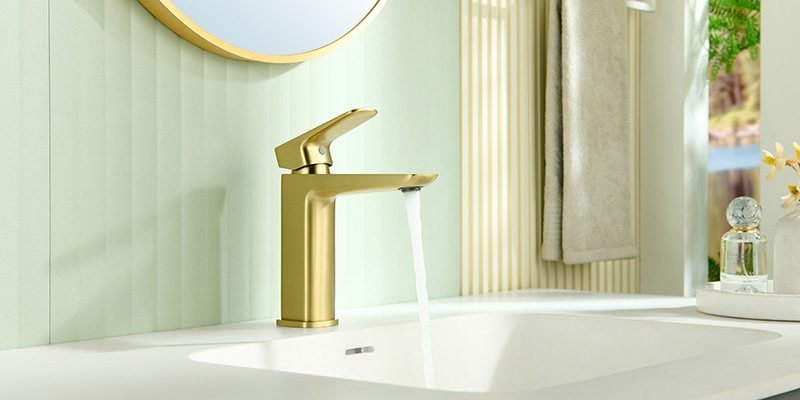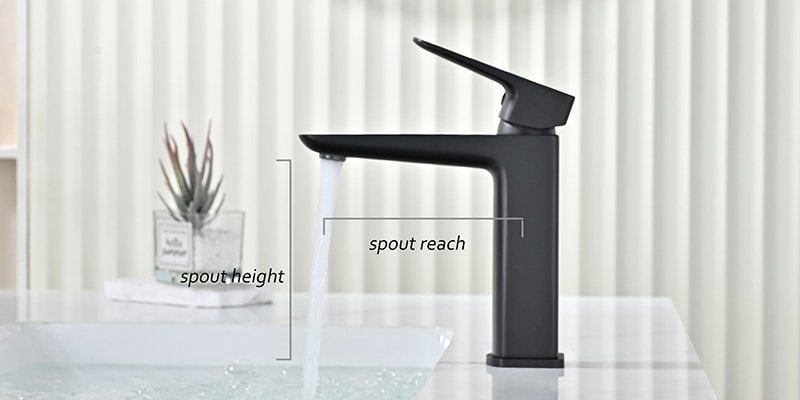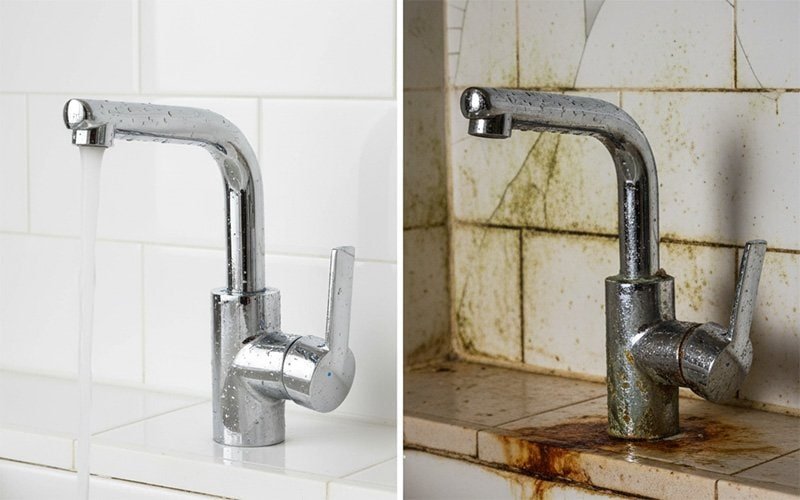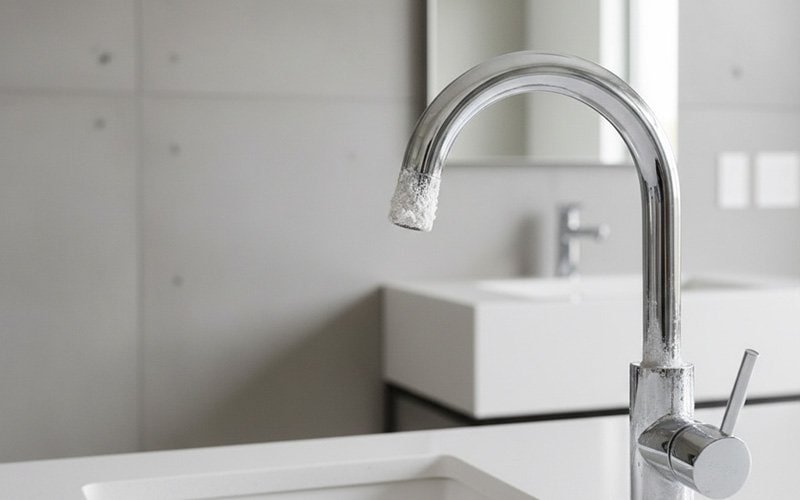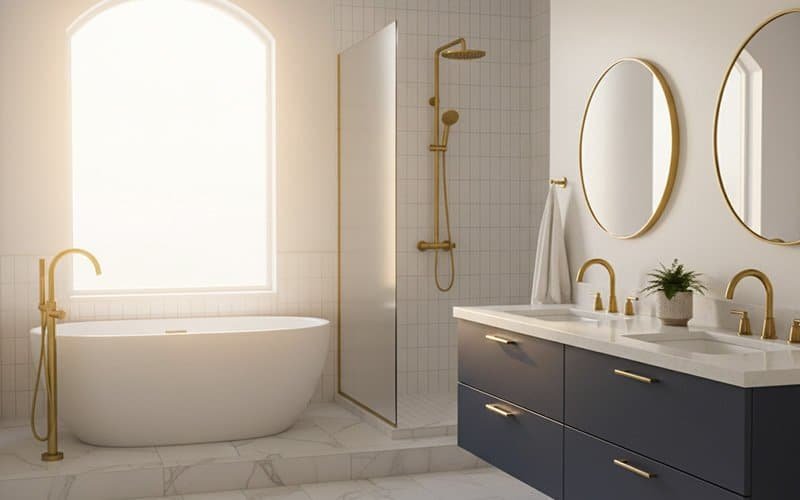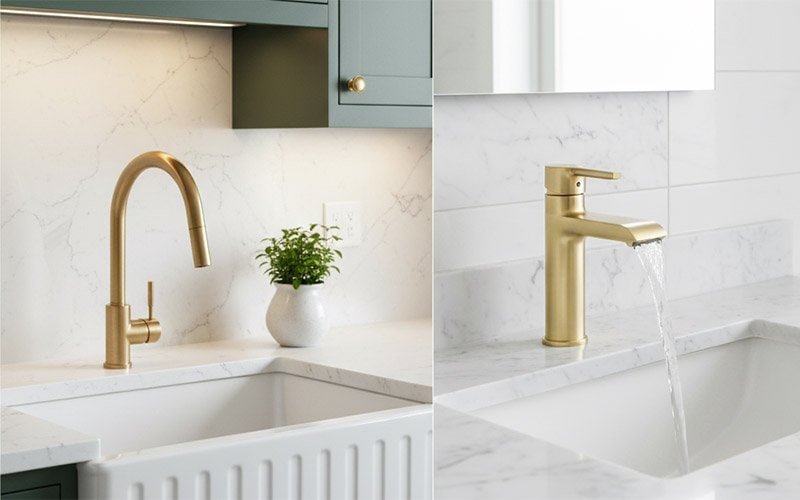
You’re finally ready to give your bathroom that much-needed facelift, and the faucet is a key element to consider. With so many styles, sizes, and configurations available today, you might be wondering: Are bathroom faucets universal?
The short answer is both yes and no. Bathroom faucets are not universally compatible across all fittings. They are certainly not one-size-fits-all fixtures, as compatibility depends on various factors like mounting type, size, and hole configurations.
While there are helpful industry standards that create a high degree of potential compatibility, true universality is a myth. The puzzle of finding the right fit is solved by understanding a few key variables.
The good news is that even though there isn’t a universal solution, certain standards and guidelines exist to help ensure compatibility between various types of fixtures. Understanding these factors is essential because an ill-fitting sink and faucet pair can lead to a significant increase in water waste.
This guide will provide the foundational knowledge every homeowner needs, covering everything from identifying sink types and taking critical measurements to choosing quality materials and ensuring a leak-free installation, empowering you to make a confident and correct choice for your renovation project.
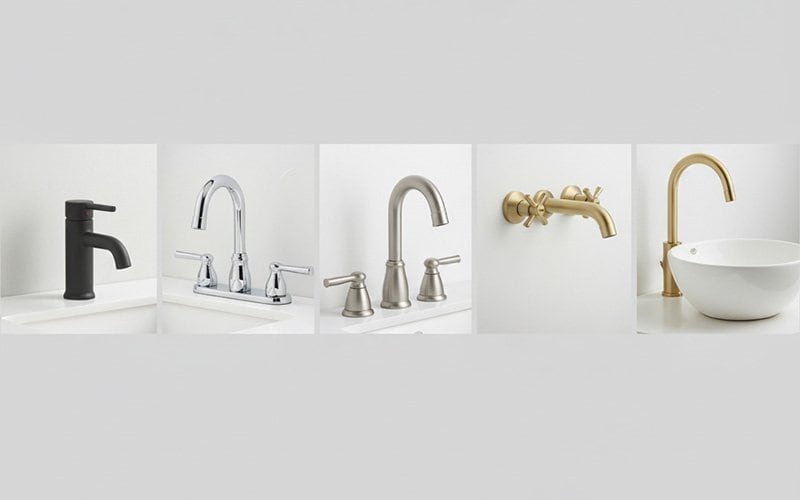
Faucet Types and Hole Configurations
Before you dive into styles and finishes, you need to know what your sink is built for. The physical interface between the sink and faucet is the most common point of failure in a DIY replacement, and it all comes down to the number and spacing of the pre-drilled holes in your sink or countertop.
Faucets can fit into a single hole or may require three holes. While bathroom faucets lack universal compatibility, they can generally be grouped into five categories based on their mounting requirements.
The Three Standard Faucet Types
There are three standard types of bathroom faucets that correspond to the most common sink drillings: centerset, single-hole, and widespread.
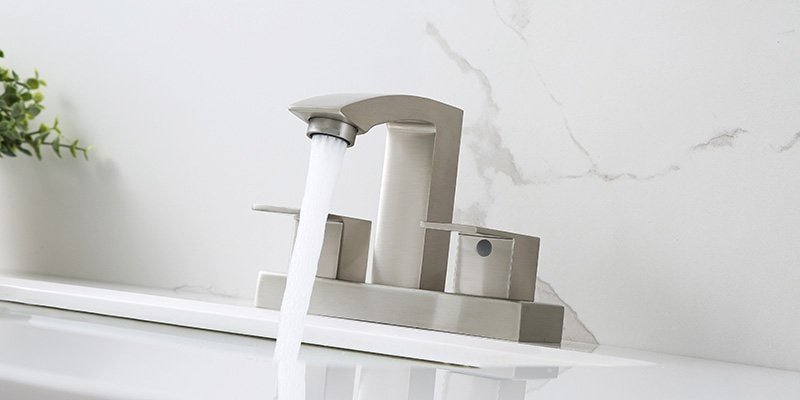
Centerset Faucet (4-Inch)
This is the most common type, especially in standard or older bathrooms. Centerset faucets feature a spout and two handles connected to a single base unit or deck plate, requiring three installation holes.
The defining measurement is the 4-inch spacing between the centers of the two outer holes (for the hot and cold handles). This compact, all-in-one design makes them ideal for smaller vanities and relatively easy for DIYers to install.

Widespread Faucet (6 to 16-Inch)
Widespread faucets are a more premium and customizable option, consisting of three distinct components: a spout and two separate handles that are not connected by a base plate.
They require three separate holes, and the spacing between the handle holes is flexible, typically ranging from 6 to 16 inches, with 8 inches being a common standard.
This versatility makes them suitable for larger sinks and master bathrooms where an elegant, upscale look is desired. The separation of components also makes cleaning the countertop around the faucet significantly easier.
Single-Hole Faucet
The epitome of modern, minimalist design, these faucets combine the spout and handle into a single body that requires only one mounting hole.
Their versatility is a key feature; while designed for single-hole sinks, they can often be installed on a three-hole sink by using a decorative base called a deck plate or escutcheon to cover the unused outer holes.
This makes them an excellent choice for modernizing an older setup without replacing the entire countertop
Specialty Configurations
Beyond the standard three, two specialty configurations address modern design trends and unique sink styles. The choice between these types often reflects the overall scope of the renovation, as they can require more significant changes to the vanity and plumbing.
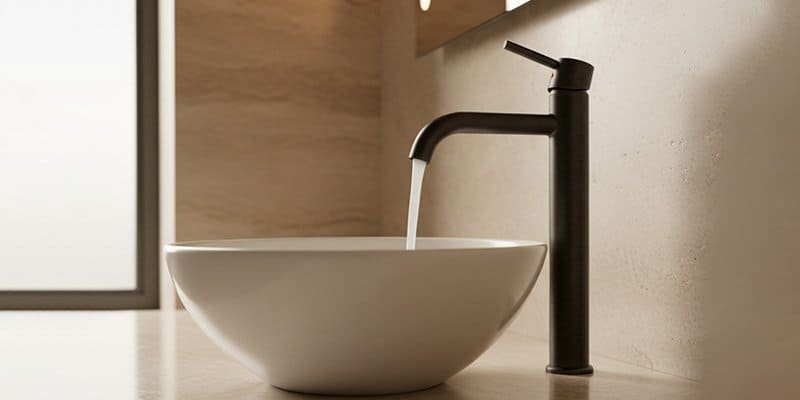
Vessel Sink Faucet
These are specifically designed to be taller than standard faucets to accommodate vessel sinks, which sit on top of the counter rather than being recessed into it.
The critical dimension is the spout height; it must be tall enough to comfortably clear the rim of the sink bowl and have enough reach to direct water into the basin, not onto the counter.
For optimal function and to minimize splashing, the spout opening should be at least 6 inches above the bottom of the sink bowl.
While vessel sinks offer a unique and dramatic aesthetic, they can present practical challenges, including difficulty cleaning around the base and potential ergonomic issues for children or shorter adults.

Wall-Mount Faucet
This style is installed directly into the wall above the sink, leaving the countertop completely free and creating a clean, uncluttered look.
This is not a simple replacement faucet; it requires the water supply lines and the main faucet valve to be installed within the wall itself, making it best suited for new construction or a major remodel where the walls are open.
Spout reach is the most critical measurement; the spout must extend far enough from the wall to direct water into the center of the sink basin to be functional and prevent splashing. The primary advantages are the striking modern aesthetic and the ease of cleaning the countertop.
However, the disadvantages are significant: higher installation costs, increased complexity, and the difficulty of accessing and repairing any leaks that may occur behind the finished wall.
The Normative Hole Standard
While the number and spacing of holes define the faucet type, the diameter of the holes themselves is another critical compatibility factor.
The industry standard size for faucet holes in a bathroom or kitchen sink is generally 1 3/8 inches (1.375 inches or 34.925 mm) in diameter. This standardization enables a broad range of compatibility within the market.
However, it is crucial to recognize that variations exist. Some manufacturers, including major brands like Moen and Delta, often specify a compatible hole size range, typically from 1 1/4 inches to 1 1/2 inches.
This slight variation is why it is essential to always check the specification sheet for both the sink and the new faucet before making a purchase.
Accurate Measurement and Retrofitting
To prevent the frustrating scenario of buying a new faucet only to discover it doesn’t fit, careful measurement is required. Transitioning from theoretical knowledge to practical application, this section provides a hands-on guide to getting the numbers right and solving common compatibility problems.
The Essential Measurements
For the most accurate measurements, it is best to turn off the water, disconnect the supply lines, and remove the old faucet from the sink entirely. While an approximate measurement can be taken with the old faucet in place, it increases the risk of error.
Hole Spacing
For sinks with three holes, the critical measurement is the distance from the center of the leftmost hole to the center of the rightmost hole.
This single number will immediately tell you which faucet type you need. A measurement of 4 inches requires a centerset faucet, while a measurement of 6 to 16 inches requires a widespread faucet.
Faucet Height
Two height measurements are essential. First, measure the total height from the countertop to the highest point of the faucet’s arc. This is crucial to ensure the new faucet will fit under any existing mirrors, shelves, or medicine cabinets.
Second, measure the spout clearance, which is the distance from the countertop to the aerator (where the water comes out). This determines the amount of functional space you have for washing your hands.
Spout Reach
This is the horizontal distance from the center of the faucet’s mounting hole to the center of the water stream. The ideal spout reach ensures that the water flows into the center of the basin or directly into the drain, which prevents splashing and makes the faucet comfortable to use.
A spout that is too short forces you to bump your hands against the back of the sink, while one that is too long can cause water to splash out onto the counter. For most bathroom sinks, a spout reach between 4 and 8 inches is suitable.
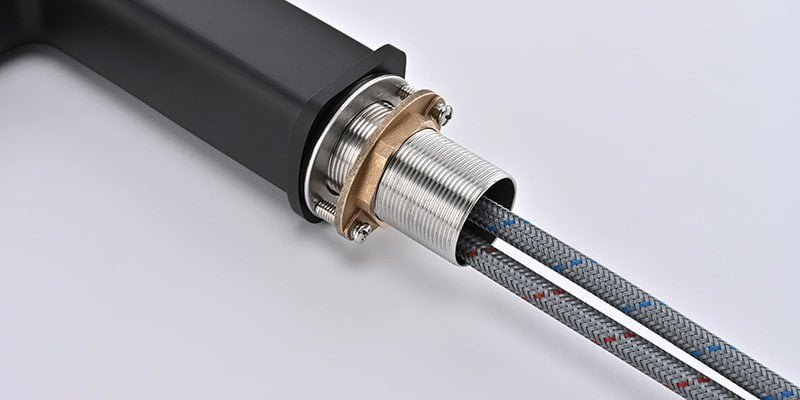
Dealing with Compatibility Issues
If your dream faucet doesn’t seem to match your existing sink configuration, don’t despair. There are common and effective solutions for bridging these compatibility gaps.
The most frequent scenario is wanting to install a modern single-hole faucet on an older sink that has three holes drilled for a centerset model.
The solution is a deck plate, also known as an escutcheon plate. This is a metal plate that is installed under the faucet to cover the two unused outer holes, providing a clean, seamless look. Many single-hole faucets come with a matching deck plate included in the box for this very purpose.
For a standard 4-inch centerset sink, a 6-inch deck plate is typically required to provide full coverage.
Here are a few other practical tips for a smooth retrofitting process:
- If you’re unsure how many holes your sink has because an old deck plate is covering them, the easiest way to check is to look underneath the sink with a flashlight. The mounting hardware will reveal the true configuration.
- When replacing a faucet, check if the new model comes with a matching drain assembly (often a pop-up drain). If it doesn’t, you will need to either use your old one or purchase a new one separately, which can add complexity and potential finish-matching issues.
- For a vessel sink, the rule is simple: the faucet must be tall enough to clear the rim of the bowl with adequate space for handwashing.
Selection Checklist: Quality, Style, and Function
With the technical requirements of fit and measurement confirmed, the focus shifts to the qualitative aspects of choosing the perfect faucet. This is a long-term investment, as a quality faucet can last for years.
The selection process involves balancing durability, aesthetics, technical standards, and your budget.

Material and Durability
The material of a faucet’s body and the type of valve it uses are the most critical indicators of its long-term reliability. A beautiful finish on a poorly made faucet will not prevent it from leaking and failing prematurely.
The material of the faucet body determines its weight, durability, and resistance to corrosion.
| Material | Pros | Cons | Best For |
|---|---|---|---|
| Solid Brass | Extremely durable, highly resistant to corrosion and rust, feels substantial. | Higher initial cost, can tarnish over time if unlacquered. | High-traffic master bathrooms and kitchens; long-term investments where quality is paramount. |
| Stainless Steel | Very durable, excellent resistance to rust and corrosion, sleek modern look. | Can be more expensive than zinc, limited finish options compared to brass. | Modern and contemporary bathrooms, areas with high humidity. |
| Zinc & Zinc Alloy | option, available in a wide variety of styles. | to corrosion over time, shorter lifespan. | rooms, budget renovations, or rental properties. |
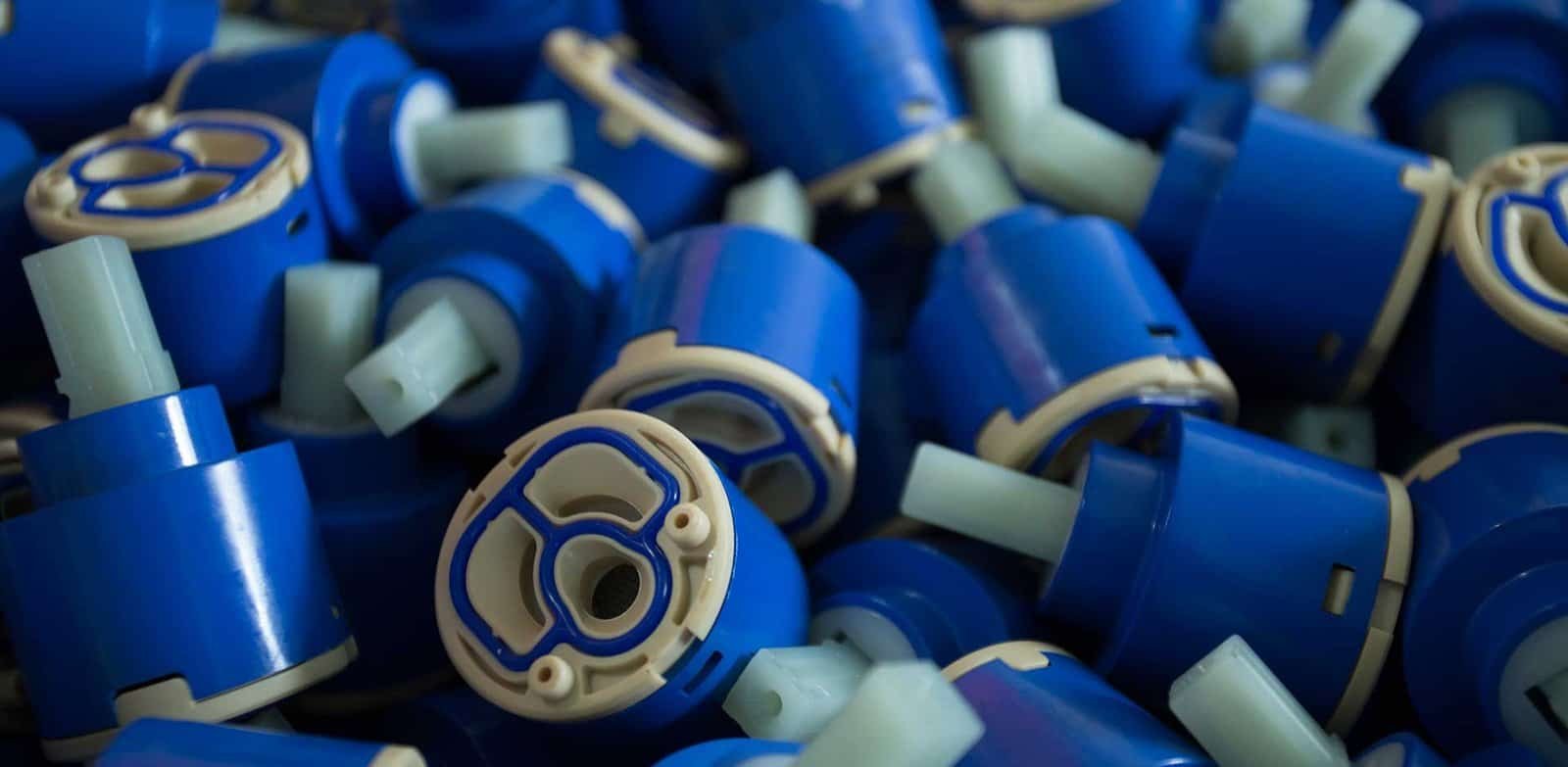
The Heart of the Faucet: Ceramic Disc Valves
Perhaps the single most important feature to look for in a modern faucet is a ceramic disc valve. This technology is the industry standard for quality and reliability.
It consists of two highly polished, ultra-hard ceramic discs that rotate against each other. With a simple quarter-turn of the handle, holes in the discs align to allow water to flow; another quarter-turn misaligns them, creating a watertight seal.
This design is vastly superior to older compression valve faucets, which rely on a rubber washer being tightened against a valve seat to stop the flow of water.
These rubber washers inevitably wear out, crack, and degrade over time, which is the primary cause of the classic, annoying faucet drip.
For a long-lasting, drip-free performance, a faucet with ceramic disc valves is a non-negotiable feature.
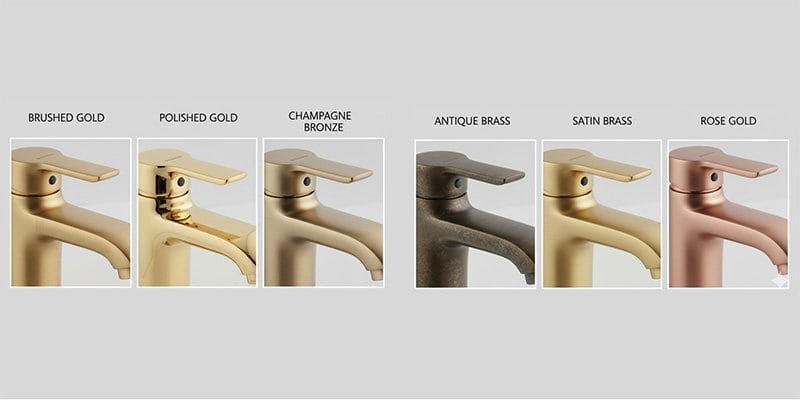
Aesthetic Choices (Finish and Style)
The faucet’s finish is a key design element. For a cohesive look, it is often recommended to match the faucet finish with other hardware in the bathroom, such as towel bars, light fixtures, and cabinet pulls.
Polished Chrome
A timeless classic that is durable, easy to clean, and typically the most affordable option. Its main drawback is that its high-shine surface readily shows fingerprints and water spots.
Brushed Nickel
A highly popular choice with a soft, matte look that is excellent at hiding water spots and fingerprints, making it a low-maintenance favorite for busy bathrooms.
Oil-Rubbed Bronze
This finish provides a dark, rich, and traditional look, perfect for rustic or Mediterranean-style bathrooms. It is also very effective at concealing smudges.
Matte Black
A bold, modern finish that makes a strong design statement. It excels at hiding water spots but can be more susceptible to scratches from abrasive cleaners and may show mineral deposits from hard water more readily.
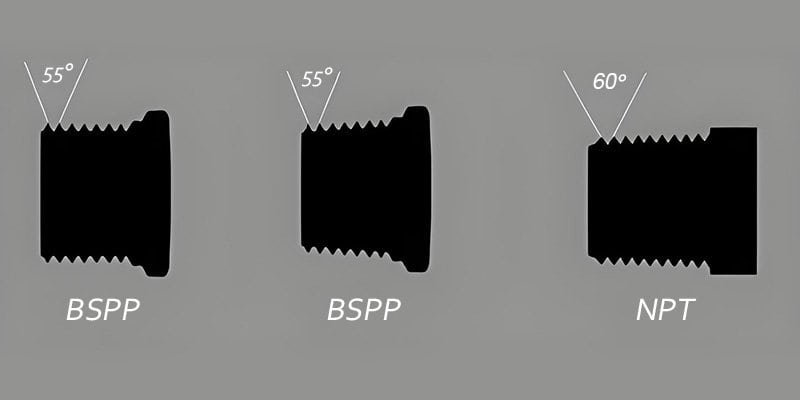
Technical Standards and Eco-Consciousness
Beyond aesthetics, a few final technical details ensure proper function and sustainability.
Connection Standards
In North America, the flexible supply lines that connect the faucet to the shut-off valves under the sink typically use a 3/8-inch compression fitting.
The pipes themselves use a thread standard called NPT (National Pipe Thread), which is characterized by a 60-degree thread angle and sharp, flat peaks and valleys.
Most of the rest of the world, including Europe and the UK, uses BSP (British Standard Pipe), which has a 55° thread angle and rounded peaks.
These two standards are not interchangeable. Attempting to connect an NPT fitting to a BSP fitting will result in a leak.
This is a critical detail for anyone ordering faucets from international online retailers.
Water Conservation
To reduce water consumption and save on utility bills, look for faucets with the EPA’s WaterSense label. A WaterSense-certified bathroom faucet has a maximum flow rate of 1.5 gallons per minute (GPM) or less, a reduction of 30% or more from the standard 2.2 GPM, without sacrificing performance.
This efficiency is often achieved with a low-flow aerator, a small screen at the tip of the spout that mixes air into the water stream. This creates the sensation of a full, robust flow while using significantly less water.

Installation and Leak Prevention
A correct installation is paramount to ensuring your new fixture functions perfectly and remains leak-free for its entire lifespan. This is where attention to detail prevents costly water damage down the road.
Best Practices for DIY/Professional Installation
The decision to install the faucet yourself or hire a professional depends on the complexity of the job and your comfort level with plumbing.
When to DIY
A simple, like-for-like replacement (e.g., swapping an old centerset for a new one) is a very manageable project for a handy homeowner with the right tools, including an adjustable wrench and a basin wrench for tight spaces.
When to Call a Professional
It is highly recommended to hire a licensed plumber for more complex tasks. This includes installing a wall-mount faucet (which requires in-wall plumbing), dealing with old, corroded pipes that might break during removal, or if you simply lack the specialized tools and experience.
The cost of a professional, typically $130 to $350 for installation, is a wise investment against the potential for thousands of dollars in water damage from an improper DIY job.
Whether you do it yourself or hire a pro, these leak-prevention techniques are essential:
Use the Correct Sealant
To create a watertight seal between the base of the faucet and the sink deck, you must use the right material.
- Plumber’s Putty: This is a soft, pliable compound ideal for creating a non-permanent, waterproof seal on stainless steel or porcelain sinks. It’s easy to apply and clean up.
- Silicone Sealant: This is the only choice for porous surfaces like granite, marble, or quartz countertops. The oils in plumber’s putty will permanently stain these materials. Silicone creates a strong, permanent, adhesive bond.
Seal Threaded Connections
For any tapered, threaded pipe connections (like a shower arm), wrap the male threads with Teflon tape (also called plumber’s tape) to lubricate the connection and ensure a leak-proof seal.
Tighten, Don’t Overtighten
Secure all mounting nuts and supply line connections until they are snug. Overtightening is a common mistake that can crack the fittings or strip the threads, creating a weak point that is guaranteed to leak in the future.
Conclusion
The final verdict? Bathroom sink faucets aren’t truly universal. Compatibility hinges on a precise match between the faucet’s design and the sink’s pre-drilled hole configuration, along with several other key variables.
However, the industry is highly standardized. Because most faucets share common features like a 1 3/8-inch mounting hole diameter and standardized water supply connection sizes (typically 1/2-inch NPT with 3/8-inch compression fittings in North America), finding a compatible replacement is far from an impossible task.
By understanding the critical factors—hole configuration, essential measurements, material quality, and valve type—you can confidently navigate the market.
Balancing these technical requirements with your personal preferences for aesthetics, functionality, and budget will lead you to the perfect faucet that elevates your bathroom’s allure and utility.
With a little research and the practical knowledge gained from this guide, you are now equipped to make an informed decision that will bring you satisfaction for years to come. Happy faucet hunting!
Related Posts



